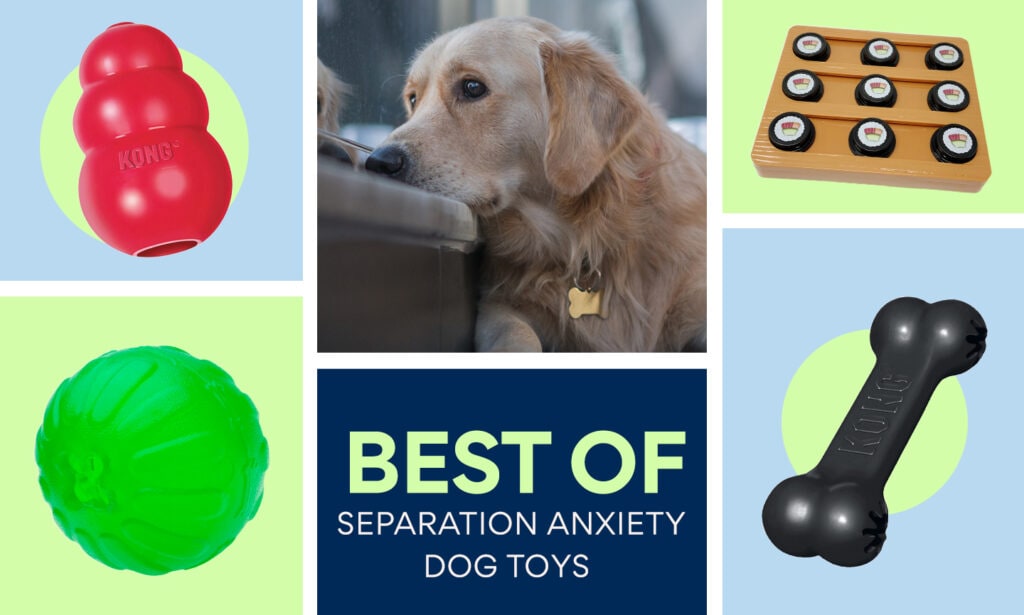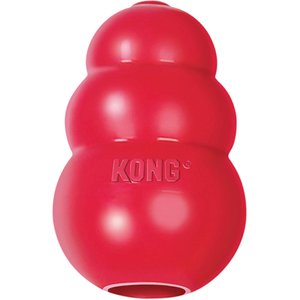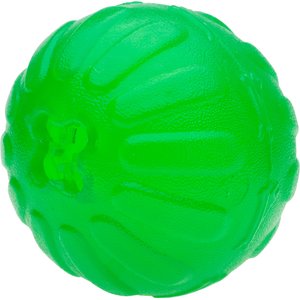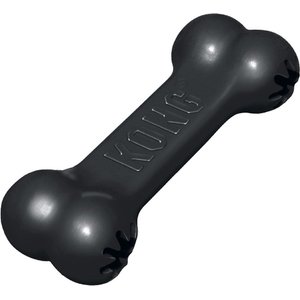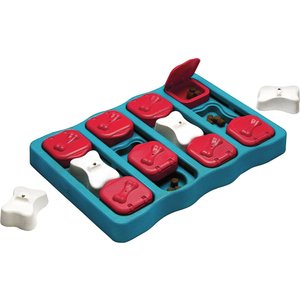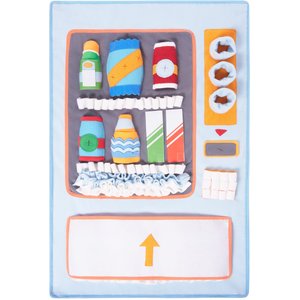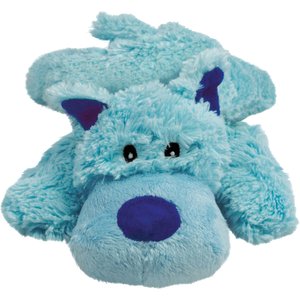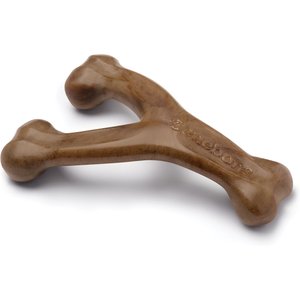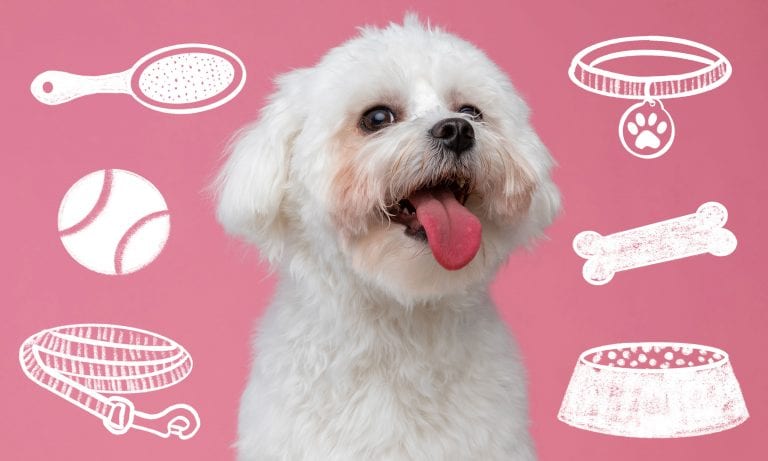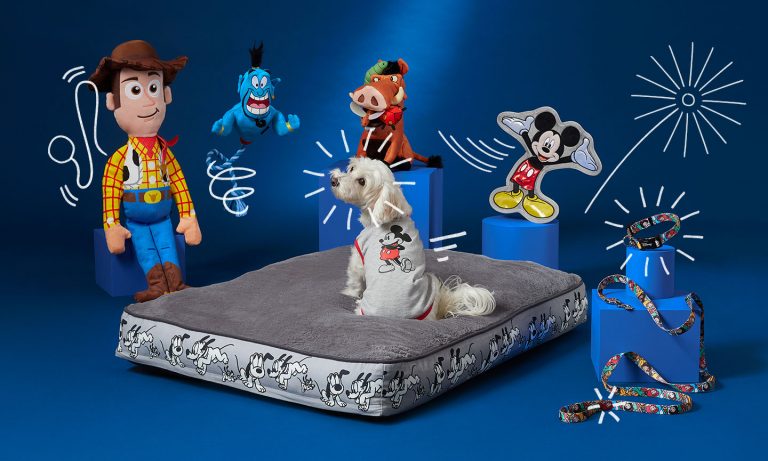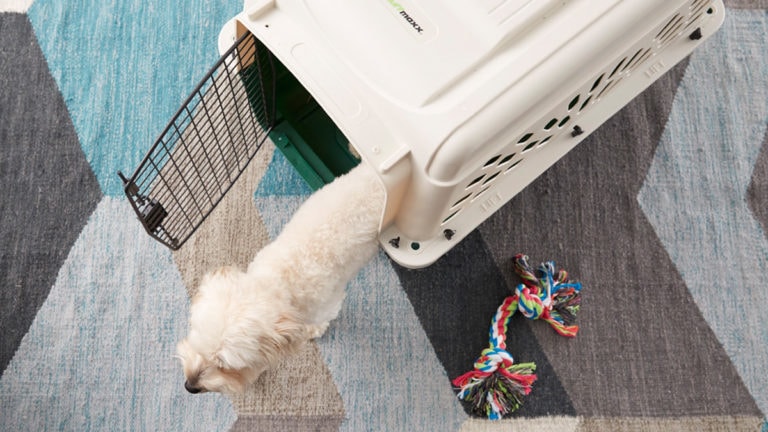If your dog gets stressed out when you’re apart, one way you can help them out is with separation anxiety dog toys. From soothing softies for snuggling to puzzles and games that keep their brain enagaged, dog toys for separation anxiety can help your pooch feel more relaxed while you’re away. To get you started, we’ve rounded up some of the best dog toys for separation anxiety as tried and tested by Chewy pet parents like you. These top-rated, best-selling toys for dogs with separation anxiety are specially designed to help anxious pups cope better with time away from their favorite humans.
Just remember, always consult with your veterinarian or a qualified behaviorist as well—dog toys for separation anxiety are one tool to help with separation anxiety, but anxious dogs may need some medical help and dog training to work through their anxiety.
- 1
- 2
- 3
- 4
-
5
Best Dog Behavioral AidSnuggle Puppy Original Snuggle Puppy Plush Dog Behavioral Aid Anxiety Relief $40 on Chewy
Best Overall Dog Toy
-
Last years!
I love these for my dogs. I just retired the very first one I bought - 15 yrs ago! I full them and sometimes freeze them, either way they keep my pups occupied while they get treats.
-
Color
It was much bigger than her first one. I put treats in it for her. And it keeps her busy for hours.
-
Chew proof!
We bought one of these when our mini dachshunds were pups. They still love them at 3 we just have to find them.
Best Treat-Dispensing Dog Toy
-
My high maintenance dog has finally met his match!
My pup is the most needy creature on this planet. He refuses to play on his own and is incredibly difficult to play with due to mobility issues and his picky play style. We do a LOT to keep him busy and engaged, but he still ends up just whining and staring at us until we interact with him again. This is the and only first toy in his six years that can keep him busy and engaged independently and it feels like a major breakthrough. I stuck a few pieces of his favorite treat in the ball and he played with it for over an HOUR before he had to take a rest from it! I am so excited to have an entertainment option that doesn’t require my...
-
Great Treat Ball!
This is the 2nd time I have purchased h this treat ball. The first one lasted 4 years, then accidentally got split open. My dog loves this treat ball!! I put treats in it almost every day when I go to work.
-
Great entertainment
The design doesn't let go of treats easily, but just often enough to keep my dog engaged. She chases this around the house for up to half an hour at a time
Best for Extreme Chewers
-
Hold up well
These last forever even with our heavy chomper! They are definitely a favorite toy! We use easy cheese to fill it sometimes and other times there are other treats we like that fit perfectly to keep her busy! Love them!
-
Pitbull's best friend
My dog, Kane carries his kong toys around like it's a pacifier lol highly recommend. The black ones are stronger than the red. He loves them.
-
Strong
My dog is a Pitt/Boxer mix and she loves bones. This has been her third one. She chews most of the day and flings it around the house. Her and our other dog, also a strong dog, play tug of war with them. Her first two Kings (medium sized) lasted for over a year. This brand is the only that holds up for our dogs. Eventually they mangle them but we get our moneys worth out of them.
Best Puzzle Toy
-
Great toy
My dog likes us to fill it with her dog food and she will open the boxes to eat what’s inside. Makes her slow down and enjoy her food.
-
Keeping dogs enteretained
My pups love this, especially my older guy! I feel bad on days i’m extra busy or at work long and they spend most of the day moping around the house, it keeps my pup busy for a good 15 minutes or more (he’s gotten good at solving these types of puzzles) but i also love that it’s simply good for their brain!
-
Puzzle solving at it's best
My dog is new to the puzzle games, so I was worried this might be too complex for her. She did great! She gets her puzzle before I go to work every morning.
Best Dog Behavioral Aid
-
Cute and Soft
Snuggle Puppy was soft. I didn’t not open/use as my puppy transitioned from his litter mates to my house quite well. I have two towels that were rubbed on the mother and other pups that seemed to help a lot
-
Best pup toy
I bought this for my 7 week old puppy almost five years ago. He loved it and found comfort from it at night right from day one. He still has it and takes it bed every night. I just bought another one for a new puppy due to arrive shortly. Hopefully it has the same affect!
-
It works!
This anxiety relief plushie works well for my dog. He carries it around during the day. He loves the heartbeat when it thunders loudly or with any loud noise. It is very securely closed she can’t get the heartbeat piece out. So glad I bought this.
Best Snuffle Mat for Dogs
-
Awesome Sniffle Mat!!!
This mat is by far the best sniffle mat I have come across. It’s super big and it will accommodate my 3 to 4 dogs once without any fighting. Lol plenty of room and lots of hiding places. I highly recommend. Worth every penny.
-
Super cute well made
Love the concept of it being a vending machine for treats suctioned it to my slider that the dogs go in & out of weeks ago & it’s still up
-
Both of my old ladies love it!
My girls are both 11 years old and love this! It's a good size too considering the price. As you can see in the picture they're med/large dogs. It makes ruffley noises and has a few squeakers.
Best Plush Dog Toy
-
Lola’s last Haul!
She loves all but the ball? Surprised she doesn’t use she LOVES balls! Not a ball issue it’s a Lola thang:-)
-
Kong toys
My dog loves these. She takes them out to the yard and shakes them vigorously. She is rough with her toys, so Long is the best bet for both of us.
-
What a cute stuffed toy for my dog!
My dog loves this sweet, blue puppy dog toy. She has so much fun with it. She tosses it into the air and then runs after it and gets it squeaking. She loves playing with it!
Best Long-Lasting Chew
-
Dog loves it
My dog chews on it a lot. Keeps him busy. Hopefully he will stop chewing on things he shouldn’t
-
Dogs love these
I have 2 Mini Aussies. They love these bones. They are very active bone chewers. Just beware of when they should be replaced because of hard pieces that may break off as they get worn.
-
Dog's pick this one the most
My dog's cannot have stuffed toys due to the fact our one eats them. We have tried quite a few nylabones. This particular brand and style seems to be a favorite in my three pup household.
What are the signs of separation anxiety in dogs?
Signs of separation anxiety in dogs that you should be on the lookout for, according to Dr. Jennifer Summerfield, DVM CPDT-KA, a veterinarian and professional dog trainer:
- Potty accidents that only happen when you aren’t home
- Destructive behaviors like chewing on things or pawing at walls or doors
- Reports from neighbors that your dog is barking, whining, howling or making other noises while you’re away
- Treats or food that aren’t eaten while you’re gone—that your dog may then eat right away when you get home
- Excessive drooling when you’re gone
- Pacing or restlessness
If you’re concerned that your dog may have separation anxiety, Dr. Summerfield recommends using a dog camera to watch or record what your dog is doing while you’re gone. She says recording your dog’s actual behavior rather than relying on whatever circumstantial evidence you find when you get home can help distinguish between a pup with true separation anxiety and a dog who might just be bored and destructive.
How do toys help with separation anxiety in dogs?
Certain dog toys, like those you stuff with treats, can be helpful for many dogs with separation anxiety issues because they “help keep the dog happily occupied for a while, and also start teaching them that staying home alone isn’t such a bad deal since that’s when the really good stuff comes out,” Dr. Summerfield explains.
She often recommends some sort of extra-special, long-lasting treat like a stuffed KONG or Twist’nTreat filled with peanut butter, spray cheese or canned dog food whenever they leave the house. Freezing these types of toys after stuffing them helps them last longer.
Be aware, though, that many dogs will initially be too anxious to have any interest in toys or treats while they’re home alone. In these cases, Dr. Summerfield says anti-anxiety medication from your veterinarian can make a big difference, so she always recommends getting your dog’s veterinarian involved as part of the process.
Tips for Introducing a New Dog Toy for Separation Anxiety
You should always supervise your dog when giving them a new separation anxiety toy. Start by giving your dog their new toy while supervised, then take short trips away to get them used to the idea of you being gone.
Keep in mind that different types of separation anxiety toys will be better for certain pups—snuggle bugs who aren’t big chewers may love a soft plushy or easy lick mat while frisky pooches with lots of energy to burn may need a more challenging puzzle game or durable chew toy.
What are other ways to help separation anxiety in dogs?
1. Talk to your veterinarian about medication for separation anxiety.
According to Dr. Summerfield, medication is one way that you can really help your dog work through their separation anxiety. “Separation anxiety is one behavioral issue that’s really, really hard to make progress on without some anti-anxiety meds on board, since your dog is essentially having a panic attack every time you leave the house,” she says.
When your pup is super upset because of a stressful situation, they’re not able to learn new or better behaviors, so Dr. Summerfield says she often finds medication is a helpful part of the initial treatment plan to help make headway on changing their feelings. Pet parents can consult with their veterinarian or set up a consultation with a veterinary behaviorist to talk through the different options available, and help you decide if medication would be a good idea for your dog.
2. Keep comings and goings as calm and low-key as possible.
Don’t make a big production of saying goodbye to your dog or make a huge fuss over them as soon as you get home. According to Dr. Summerfield, “That just highlights the contrast between how fun and awesome it is when you’re home, and how quiet and lonely the house is when you’re gone.” Instead, keep calm when leaving or returning home to help your dog get used to the idea that this is a normal, everyday activity.
3. Don’t punish or scold your pup for potty accidents or destructive behavior.
“Dogs are very literal—they live in the moment and don’t understand the concept of being scolded for something that happened hours, or even minutes, ago,” says Dr. Summerfield. Additionally, if your dog learns that you’re upset with them when you get home, this can increase your pet’s anxiety and make them feel more concerned about the whole situation. Instead, practice rewarding calm behavior and set up a training schedule to help work through the events that trigger your dog’s anxiety—like the sound of your car keys or the sight of you putting on your jacket.
4. Create a safe zone for your dog to relax when you’re away.
Dr. Summerfield says that in her experience, most dogs with separation anxiety do better with less confinement. “If you can safely leave your dog loose in the house or even in a gated off portion of the house, this is often a better option than crating,” she says. Set up their safe space with a comfy bed, fresh water and their favorite calming dog toys. Start with short trial runs, with a camera set up so you can see what your dog is doing. If they start to become destructive or get into trouble, you can come back and help positively redirect their behavior. Practice short absences first and slowly build up to longer times away from your dog.
Looking for other ways to help you anxious pup in addition to the best separation anxiety dog toys? Check out our comprehensive guide on separation anxiety in dogs for more tips and pointers on how to help your dog stress less and relax more—even when you’re not at home.
Learn more about how your best bud can keep calm and tail wag on:
Share:
